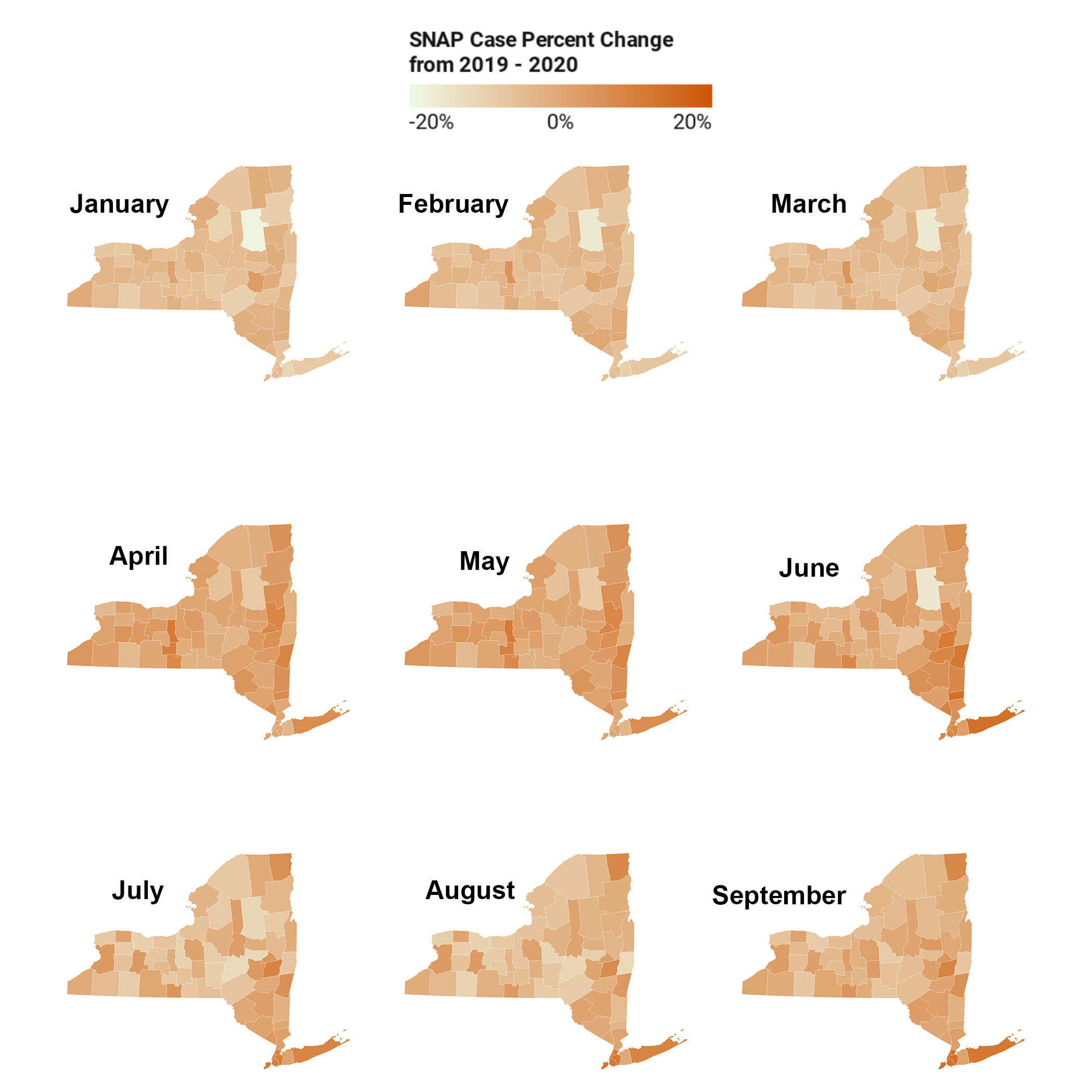Half of New York Counties Still at Pre-Pandemic Levels of SNAP Recipients Despite Increases in State
As of September 2020, New York State is still experiencing increased SNAP benefits cases, but many upstate and western New York counties continue to have fewer cases now than in 2019.
The coronavirus pandemic left New York state residents unemployed and without the means to purchase food to feed themselves and their families. One option to fill that gap was registering for the Supplemental Nutrition Assistance Program (SNAP) electronic benefits, which initially provided a monthly $204 stipend to low-income individuals to purchase food.
Data analyzed from the Office of Temporary and Disability Assistance shows that after implementing the "New York State on PAUSE" executive order in March to slow the spread of COVID-19, individual SNAP cases increased by 4.7%. Cases then increased each month, reaching almost 10 million individual cases in September, coming after a year of decreases in SNAP cases ending at a two year low in February 2020.
How are cases still rising if the need was so dire at the beginning of the pandemic? Sherry Tomasky, a director with Hunger Solutions New York, a nonprofit dedicated to alleviating hunger in the state, said that the $600 federal unemployment benefit provided by the CARES Act in March affected eligibility.
"Both the state and the federal are countable incomes for SNAP, and when you add those together, it automatically puts any household getting unemployment over the income limit for SNAP," said Tomasky. "That benefit went away at the end of July."
During April and May of the pandemic, more than two-thirds of New York counties reported more individual SNAP recipients than the prior year, even with the CARES Act. However, many counties began returning to pre-pandemic case numbers by the summer, with almost two-thirds of counties reporting improvement in August.

Tomasky said that various factors are at play in different counties. Counties waived policies like telephone interviews and recertification extensions to make it easier to register and keep people on SNAP benefits.
"Slowly, the waivers started going away, and the counties had to start implementing these practices again, and people will always fall off the rolls as a result of that," said Tomasky.
Joel Berg, CEO of nonprofit Hunger Free America, said that counties outside of New York City also experienced economic improvements sooner. Upstate New York businesses were able to reopen, and people went back to work while the city was still on pause. New York City has increased SNAP cases month over month and is the main contributor to the increased numbers.
As COVID-19 cases begin to increase across the country again, September data shows that only half of New York State counties see less enrollment now than in 2019, a nine-county decrease from the previous month. The Office of Temporary and Disability Assistance announced an additional $100 million added to the program for October, indicating another statewide increase of SNAP cases.
New Yorkers in need of food assistance can check their eligibility for SNAP benefits at mybenefits.ny.gov.
Notes: Data accounts for individual SNAP recipients only. Household cases are not included in this analysis.